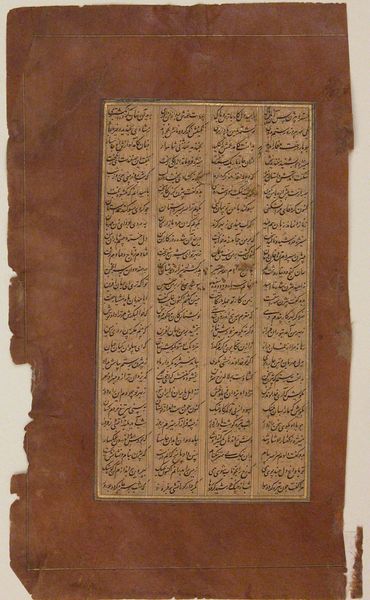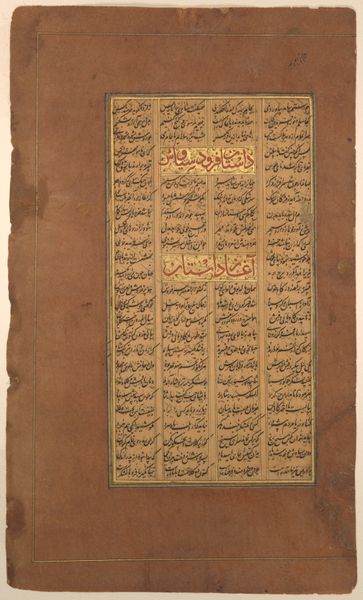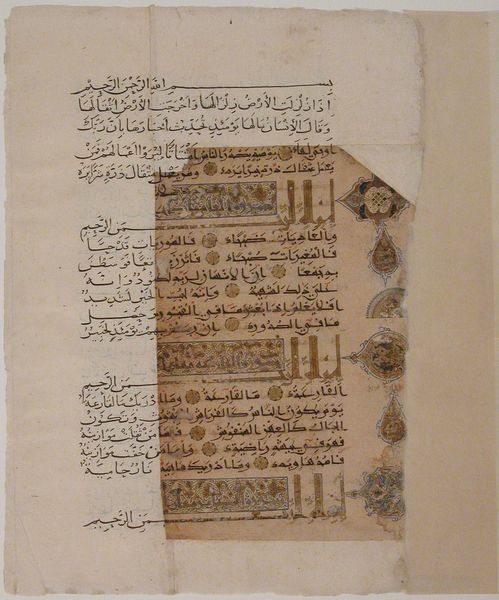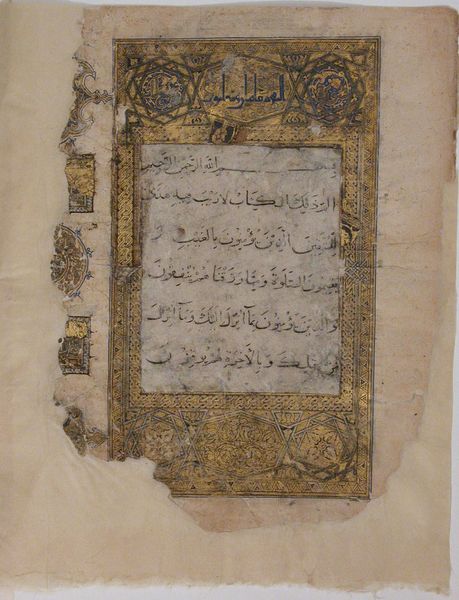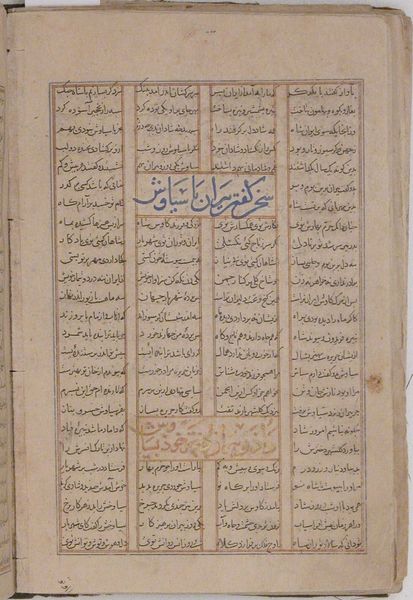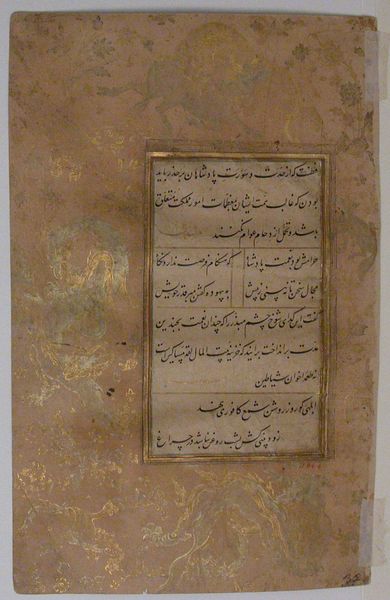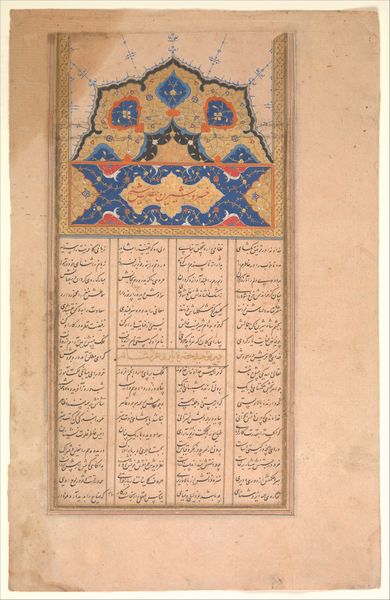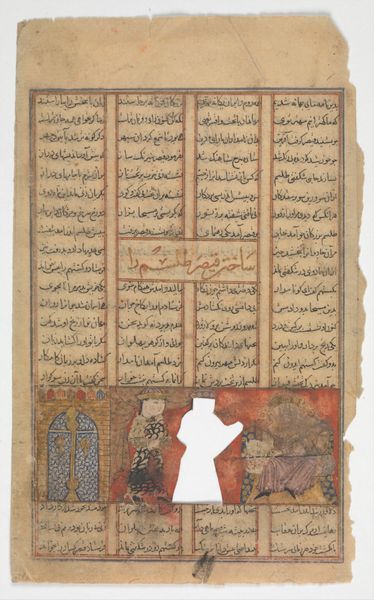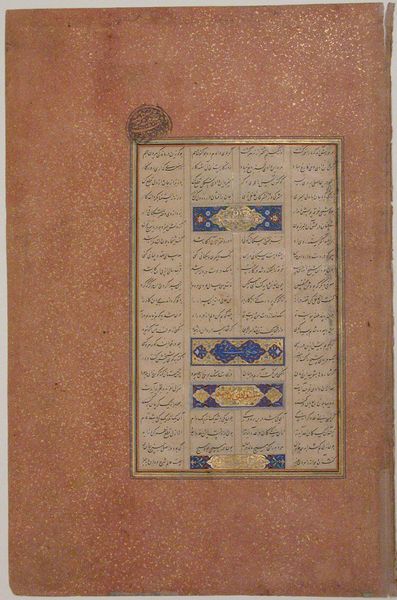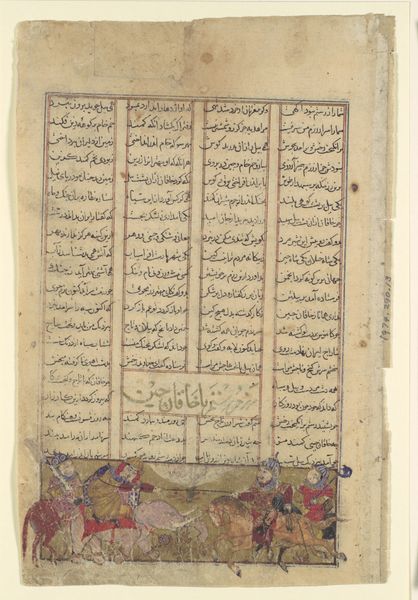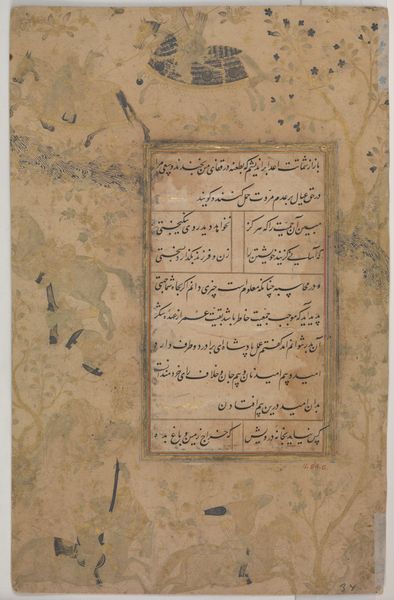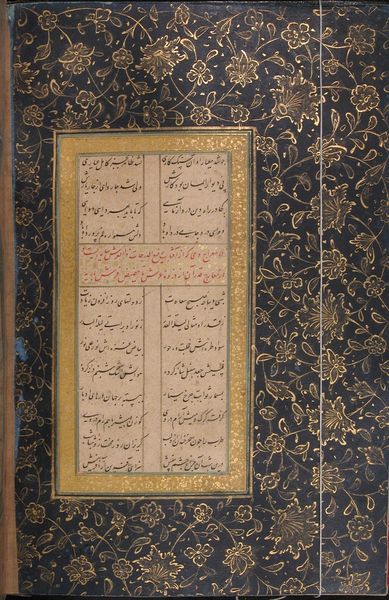
Page of Calligraphy from a Shahnama (Book of Kings) of Firdausi 1585 - 1635
0:00
0:00
paper, ink
#
narrative-art
#
paper
#
ink
#
coloured pencil
#
islamic-art
#
miniature
#
calligraphy
Dimensions: H. 8 in. (20.3 cm) W. 4 3/4 in. (12.1 cm)
Copyright: Public Domain
Editor: Here we have a page of calligraphy from a Shahnama, or Book of Kings, crafted between 1585 and 1635, now residing at the Metropolitan Museum. It's mesmerizing to look at; I could get lost just in the swirling script. What symbolic meaning do you find embedded within it? Curator: It's true that the visual harmony can be mesmerizing. But beyond aesthetics, the very act of writing elevates the text, it imbues the stories with lasting power. This calligraphy is not merely decorative; it's an act of cultural preservation. Think of the stories carried within it, epic tales forming collective identity across generations. Editor: So, the script itself becomes a symbol, representing more than just the words on the page? Curator: Precisely. Each stroke, each carefully placed mark, echoes the reverence for the narrative. Do you see how certain sections are highlighted in gold? What does that emphasis suggest to you? Editor: Perhaps the most important passages, or key moments in the narrative that deserve special attention. They shine as highlights of this historic saga. Curator: Exactly! The illuminated sections act like visual anchors, emphasizing the weight of specific ideas or events, ensuring their enduring presence in cultural memory. Editor: I’d never thought of calligraphy as active and preserving cultural memory. It really adds depth to this artwork. Curator: Indeed. And appreciating it helps unlock layers of meaning, connecting us to the cultural narrative across centuries. It reveals how art serves as a continuous thread between past and present.
Comments
No comments
Be the first to comment and join the conversation on the ultimate creative platform.
